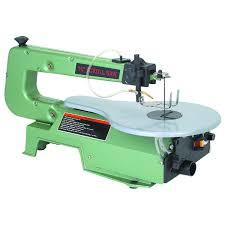
In this article, I will continue to discuss the sorts of plain end scroll saw blades which are accessible to you personally as a scroll sewer.
1. Precision-ground
These are in fact dumpster-tooth blades. Nonetheless, this kind has little teeth which were ground instead of filed. Due to this, the edges are much sharper and produce a straight line cut and have a very smooth surface finish. Most wouldn't recommend this kind to beginner scrollers. This is because these sorts can be very unforgiving, that is always to say that many mistakes can be made with these type of blades for their aggressiveness.
2. Spiral
Coil blades have teeth that go all the way around the blade. These are made by twisting a group of blades together. With this, one can cut in all directions without the need to turn the wood. Most wouldn't recommend these, unless for very specific applications, for several reasons.

3. Crown-tooth
Crown-tooth blades are a comparatively new kind of layout in scroll saw blades. The teeth have a shape of a crown with a space between each crown. There isn't any wrong way to put these leaves in. They can go in, either way; they are no upside down. This makes them rather versatile. Some find that crown-tooth blades cut a bit slower than standard blades. Nonetheless, this makes them excellent for cutting materials such as plastic or Plexiglass. This will make a module that is certainly sharp again.
4. Other sorts
Although the blades recorded in this article and Part 1 will be more than enough to handle many jobs that you just come across, they may be a few sorts of specialization blades accessible. There are blades to cut metal, plastic and some that even cut blades. Most businesses supply specific blades for these type of applications. You must ensure which you check with the maker of the blade the blade is suited for the forte application that you just intend to use it for. Check them out as you advance in your scrolling. You may want to use them for specific applications. Practically all tool businesses supply particular blades.
